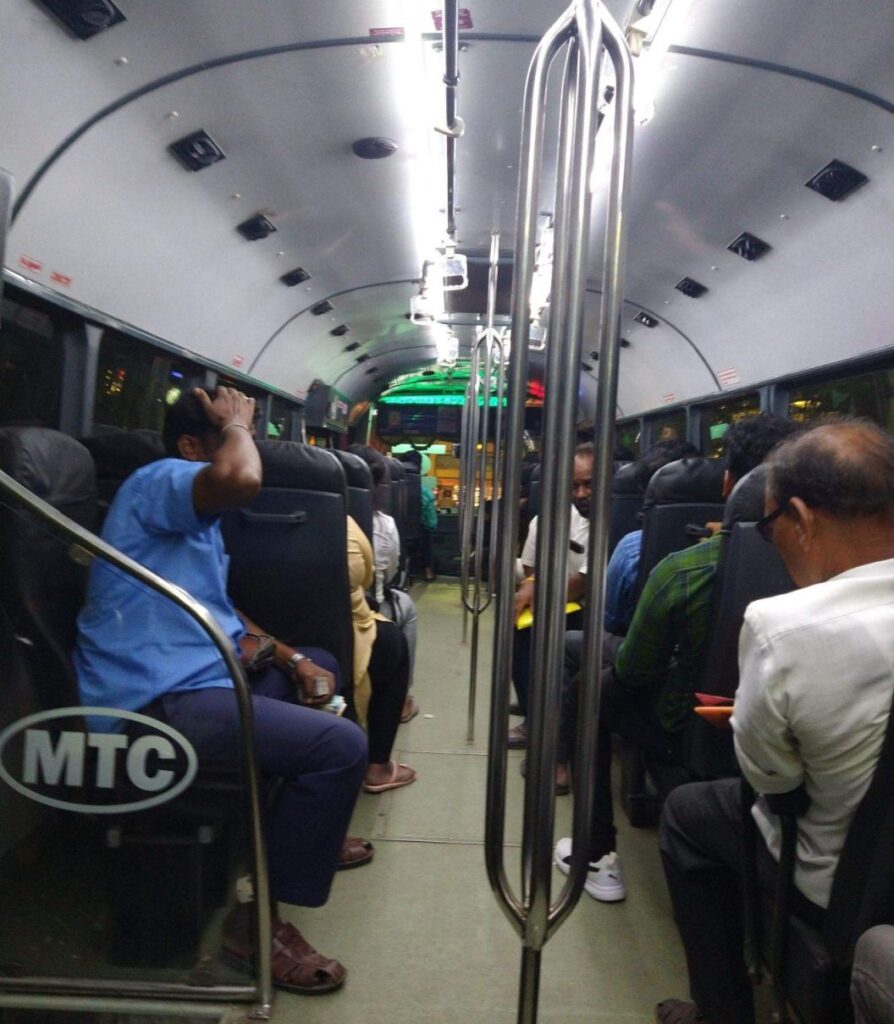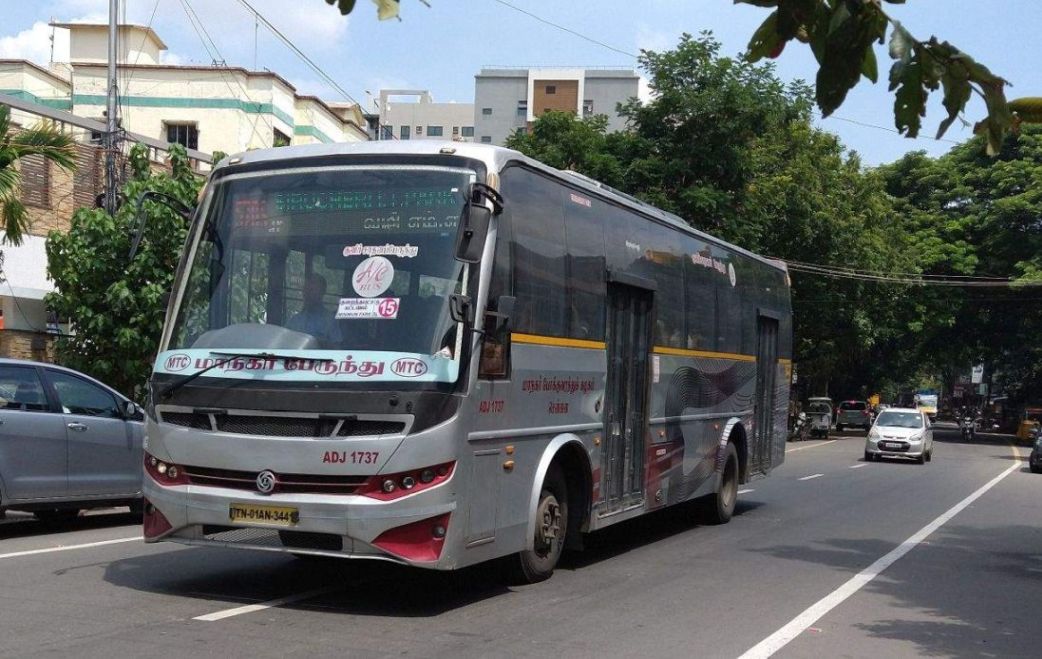Over the course of the last two weeks, I’ve been traveling a lot in MTC buses. During my rides, I got to try out the Metropolitan Transport Corporation’s (MTC, fka Pallavan) not so new air-conditioned buses.
These silver-coloured buses are Ashok Leyland buses built by Gemini Coach Builders in Karur. Introduced in January 2020 by former chief minister Edappadi K Palaniswami, each bus costs ₹36 lakh and has a fare between ₹15 and ₹60. The buses have been allotted to different depots, I myself have boarded them from both the Adayar and Anna Nagar depots (AD and AN respectively).
They initially ran on route 570s between MGR Koyambedu (Chennai Mofussil Bus Terminus/CMBT) and Siruseri IT Park and 91 from Thiruvanmiyur to Tambaram. They were later on extended to other routes such as 102 from Broadway to Kelambakkam. These buses marked the return of AC buses after a gap of one and a half years. Prior to this, MTC used to operate Volvo B7RLE buses till July 2018 with a minimum fare of ₹28.
Now coming to the inside of the bus.

One thing I’ve observed about new MTC buses (and their counterparts across Tamil Nadu) is the tricolour LED display. Unlike the standard display that usually has only orange as a colour, these displays have three colours. The route number on the left-hand side is in red, the destination on the upper half of the remaining space is in green and the route underneath that is shown in white. There are two different manufacturers of these displays. One is Hosur-based Argee Equipment which supplies the displays for some of the new non-AC red buses. The remaining buses and the AC buses use displays manufactured by Coimbatore-based Wintra Engineering, who sells it under the brand name Rolls Tec Digital Passenger Information System.
Unfortunately the bus doesn’t have any internal display that shows which stop is arriving or anything. Neither is there an announcement system inside the bus. You’ll have to rely on common sense or the conductor shouting out the name of the stop.
Like all MTC buses, there is a single seat perpendicular and facing the gangway near the rear door for the conductor to sit on. All passenger seats and the conductor seat are super-plush and extremely comfortable. They are manufactured by Karur-based Sastha Seating. However, due to this, the gangway is slightly narrow and leg space is quite cramped. Some buses have different seats. These are manufactured by Swadzim, Poland-based STER seats. They are either STER’s 7T1 or Dynamic 20 seats.
Like all newer MTC buses, this one is also pretty high built, requiring you to climb a few tall steps to board and disembark. Not very accessible to be fair. The interesting thing however, is that there are two sets of string LED lights affixed to the steps which light up when the door opens, making it very convenient.
The biggest blunder in the bus is the presence of four-bar vertical grab poles near each door with one in the middle of the bus. These are similar to the ones in the Alstom-built Chennai metro and narrows the gangway further, making it sometimes difficult to cross without bumping into a fellow passenger. A single row of transparent plastic grab handles is there for passengers.
There are no luggage racks, as with most intra-city buses and unlike other AC buses (Volvo, Corona, Olectra, Tata, Force Motors, et al), the A/C vents are on the roof of the bus. This makes it out of reach for most passengers making it slightly difficult to close them or open them. On the bright side, it also makes them less vulnerable to damage. The air-conditioning itself is quite powerful and good to handle Chennai’s weather. No comparisons with them Purple Faeries here. There are no charging points or USB ports in the bus either.
The most fascinating thing I saw in this bus was in the seat directly behind the front door. The window seat has a metal ring attached to the wall of the bus meant for Divyang passengers who use crutches to hold them there.
Overall the bus is pretty comfortable, although it tends to get crowded really fast. There are no passes valid for this bus, all passengers have to buy a ticket. There are no daily passes available, MTC having done away with them after the 2018 fare hike.
Featured Image: MTC’s AC bus belonging to the Adayar depot running route 570S from MGR Koyambedu to Sirucheri IT Park (Srikanth Ramakrishnan/BESTpedia, available on the Wikimedia Commons)
If you are stepping out, do note that while masks are no longer mandatory, please stay safe, better safe than sorry.
![]()


